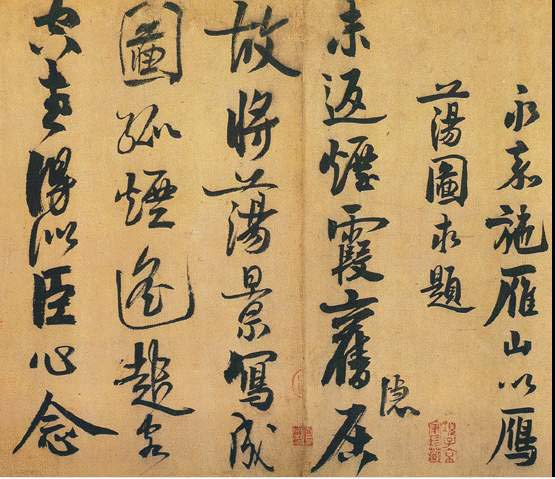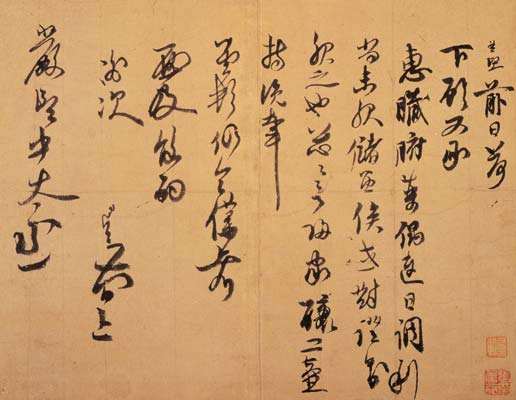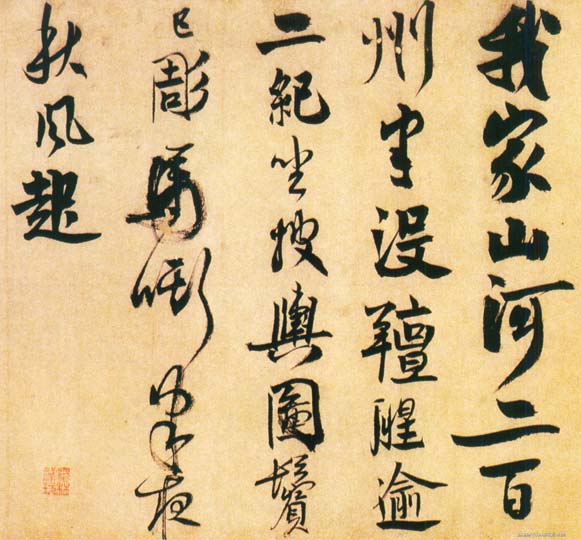Zhao Mengjian (1199-1267?) was a member of the Song clan and the eleventh generation grandson of Taizu. His courtesy name is Zigu, his nickname is Lanpo, and he is also known as Yi Zhai Jushi. He is a native of Huzhou, Zhejiang. His family was from a poor family. In the second year of Emperor Baoqing's reign (1226), he became a Jinshi and became a scholar in the imperial court. He is good at poetry and calligraphy, and is good at ink and white painting of daffodils, plums, orchids, bamboos and stones. He has a plum tree handed down from generation to generation. The handwriting is strong and the style is noble. He was also the most famous collector of calligraphy and painting in the Southern Song Dynasty. It is recorded in history that he "has stored many famous gold and stone relics from three generations. When he met his understanding, he even poured out his money and changed them without losing money." It is said that he once obtained a treasure of calligraphy called "Five Characters that Will Not Damage the Original Orchid Pavilion". When he returned home, the wind capsized his boat, and he "stood in the shallow water with his wet clothes on. He held a placard in his hand and said to others: 'The Orchid Pavilion is here, there is nothing left to cherish.' Because of the title The horoscope at the beginning of the volume says: 'Life is precious, but treasures are precious.'" His hobby of collecting has reached an almost crazy level. Zhou Mi from the Song Dynasty praised: "Hey, in modern times, those who seek good things and be elegant as a son will not get it." (Zhou Mi's "Qidong Wild Words" Volume 19).
It is also reported that after Zhao Mengjian entered the Yuan Dynasty, he was unwilling to be an official and lived in seclusion in Guangchen Town (now Haiyan County) in the prefecture. "The Duke (Zhao Mengjian) came to visit the Duke from his disciple Ang (Zhao Mengfu) from Tiao, but he refused to accept him. His wife persuaded the Duke and ordered him to enter through the back door. After sitting down, he asked: "How is Bianshan Lize doing lately?" Zi Ang said. :'Good.' The Duke said: 'How good is my brother Naishanze!' Ziang retreated and asked people to wash the seat." (The second volume of "Compilation of Anecdotes of Song Dynasty" published by Zhonghua Book Company, edited by Ding Chuanjing) This shows that his character is very good. high. Poems include "Yizhai Wenbian".

"Self-written Poems in Running Script"

Letter to Prime Minister Yan Jianzhong, cursive script, 25.5 x 33cm, collected by the National Palace Museum, Taipei
There are not many handwritings of Zhao Mengjian handed down from generation to generation, most of which are written in regular script and running script. Calligraphy historians praised Zhao Mengjian's calligraphy and believed that his calligraphy had both Huang Tingjian's vigorous writing power and Mi Fu's playful demeanor. However, some people thought that his calligraphy had a sideways problem. He once wrote "On Calligraphy" and advocated the restoration of the regular script of the Jin and Tang Dynasties. He also put a lot of effort into the calligraphy of the two kings (Wang Xizhi and Wang Xianzhi), laying the theoretical foundation for the calligraphy restoration movement in the Yuan Dynasty.
The writing and composition of this ruler tablet, written in cursive script, were clearly influenced by the two kings. The entire body of the painting is vigorous and vigorous. Although the brush strokes are often swaying and often connected by hairsprings, it looks a bit graceful. However, because the stipples and turning points are quite powerful, it can be said to have both strength and grace. It is one of Zhao Mengjian's masterpieces.

Self-written poem in running script, paper, length 35.8cm, collected by the Palace Museum, Beijing
Zhao Mengjian was sixty-one years old when he wrote this post. It was written by Zhao in his later years. His writing is vigorous, bold and unrestrained, and has Huang Tingjian's calligraphy style. The body is thin and strong, and the middle palace is tightly knotted and tilted sideways, following Mi Fu's example. It has its own scale and is his calligraphy masterpiece.
[Explanation] My family has two hundred states in the mountains and rivers, and half of them have been free of smell for more than two centuries. Sitting on the map, my temples are withered, and the horse neighs in the autumn wind in the middle of the night.








